If you’re thinking of fun and creative ways to keep your baby’s taste buds happy, you may find yourself asking, “Can babies eat Jello?” This question has several answers with factors tied to it that you should be aware of. In today’s post, we’ll go over the benefits and risks of a baby eating jello. We’ll also look into ways you can make jello a healthier and safer option for your little one. Let’s get to it!
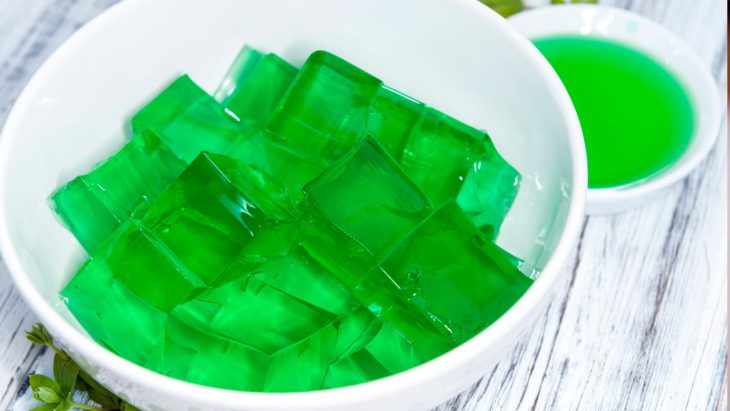
Can Babies Have Jello?
Yes, babies can have jello. However, that doesn’t mean they should.
When it comes to whether or not babies should have jello, there are a lot of factors to be considered. There are a couple of hazards associated with eating jello that can help inform you as to whether or not it is an ideal food for your baby or toddler.
The following are a few of those hazards, explained in detail.
Sugar
Experts agree that feeding excessive amounts of sugar to children can be detrimental to their health in more ways than one. Sugar can have negative impacts on learning, behavior, health, and so much more. It increases the risks of fatty liver disease, diabetes, and obesity in children. The hazards of feeding excess sugar to a baby are even more serious. In fact, the newest version of the Dietary Guidelines for Americans suggests that children under the age of 2 shouldn’t have sugar at all!
So, how does all of this relate to jello? Well, the average serving of jello contains about 18 grams of sugar. This is close to the daily recommended amount of sugar for adult women to consume.
As such, giving a baby this much sugar is not only unwise but also, could have a very harmful impact on their health.
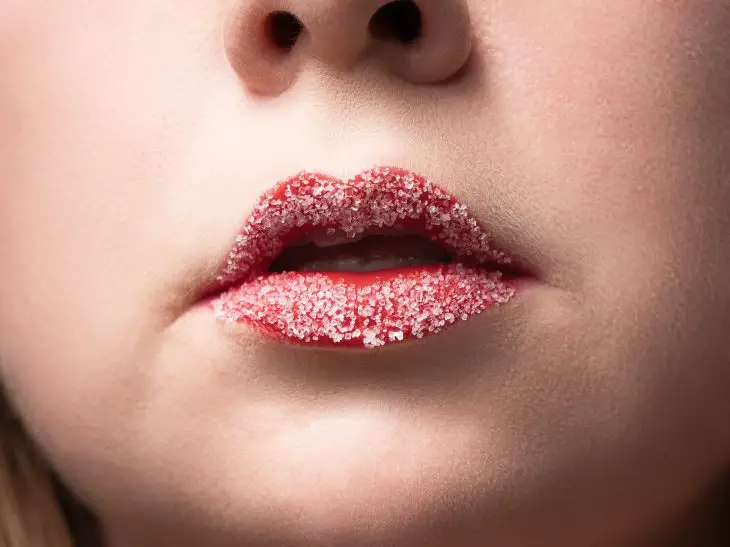
Dyes
Dyes are another source of contention when it comes to babies and toddlers consuming jello. Studies show that food dyes are linked to mental, physical, and behavioral issues. Of these issues include restlessness, hyperactivity, and inability to concentrate. It can also cause tumors to develop and can bring on symptoms of depression and irritability. Some children are allergic to these dyes, which increases the risks of wheezing and hives.
Many types of jello have food coloring in them which is what makes them those bright and fun colors that kids are so drawn to. But don’t worry. At the end of this post, we’ll be offering up a recipe that can keep your little ones happy without added refined sugar or artificial coloring. So, be sure to stick around until the end of this post!
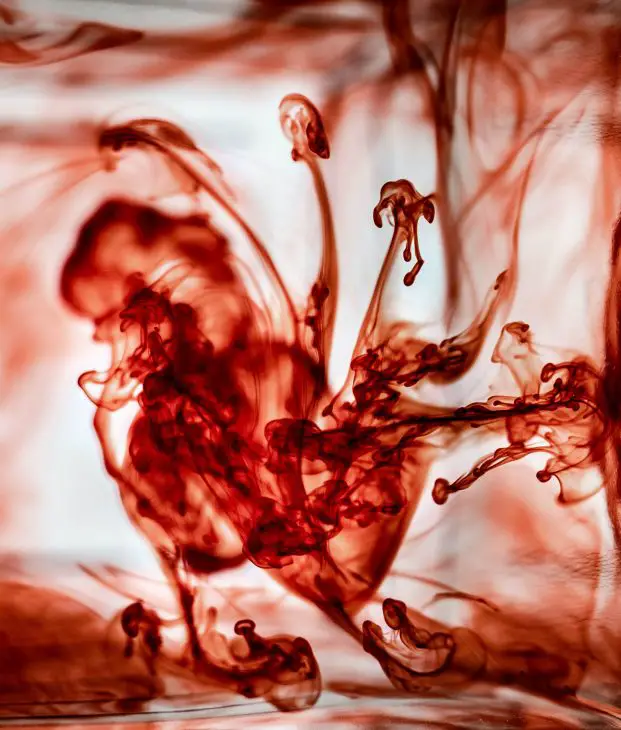
Artificial Sweeteners
In addition to the dangers of giving sugar to your little one comes the risk that artificial sweeteners pose to health. Some artificial sweeteners have been linked to cancer and some may trigger unwanted symptoms in certain individuals.
Since your baby or toddler is still young and developing, we recommend you steer clear of “sugar-free” versions of jello that contain artificial sweeteners. Your best bet is to make your jello from scratch at home– we’ll get to that in a bit! For now, do your best to avoid the following artificial sugars that could be floating in your baby’s jello:
- Aspartame
- Sucralose
- Saccharine
- Stevia
- Monk Fruit Extract
- Xylitol
The Shape and Texture
One final concern when considering jello for babies is its shape and texture. Though jello can be thought of as safe for babies given its pliable and easy-to-chew consistency, it can also be perilous. Jello cut into large cubes or shapes can easily get lodged in a baby’s throat causing them to choke. Also, because gelatin is thick, a baby that puts too much jello in their mouth is also likely to experience issues. Because of this, we recommend you mash the jello into small pieces and that you serve it on a spoon to your baby rather than in bite-sized chunks.
When Can Babies Eat Jello?
You may be wondering at what age can babies eat jello. Given the above risks surrounding commercially-sold jello, we would advise you not to feed children jello that are under the age of 2.
Having said that, there are ways you can dish up healthful servings of jello to your little one before then. When you do, be sure that the jello is smashed (for children under three) and served on a spoon, rather than as finger food.
Still have questions? We have answers! The following questions are frequently asked among curious parents eager to offer jello to their children.
Can Babies Eat Strawberry Jello?
Commercially-sold strawberry jello usually contains the infamous red dye often thought to cause ADHD and hyperactivity in young children. It also usually contains a lot of sugar. Rather than serve your baby this type of treat, consider making your own jello at home.
Note: When making jello at home, you’ll notice that some recipes call for honey. It is important that you avoid giving honey to children under the age of 1 year to avoid risks for botulism. Substitute the honey in the recipe for maple syrup instead.
Can 7 Month Old Eat Jelly?
A 7-month-old may be able to consume jello that is smashed and served on a spoon. However, we don’t recommend giving your baby a lot of this, as the sugar in the jello may cause digestive issues.
Can a 9 Month Old Eat Jello?
A 9-month-old may enjoy eating jello that is smashed and served on a baby-safe utensil, however, we would not recommend making this a frequent occurrence.
Can a 1 Year Old Eat Jello?
We’re certain that a one-year-old will love the taste and texture of jello, but they are still quite young. Remember that, technically, a one-year-old should not be consuming added sugar. If you can, wait until your baby is at least two years old before allowing them to enjoy this sweet and deliciously jiggly treat.
Can 2 Year Olds Eat Jello?
A 2-year-old can enjoy eating jello with added sugars at this age, but artificial coloring and choking hazards still pose an issue. Be careful how much jello you give your little one. Although your toddler can technically have sugar at this age, it can be detrimental to their health in large quantities.
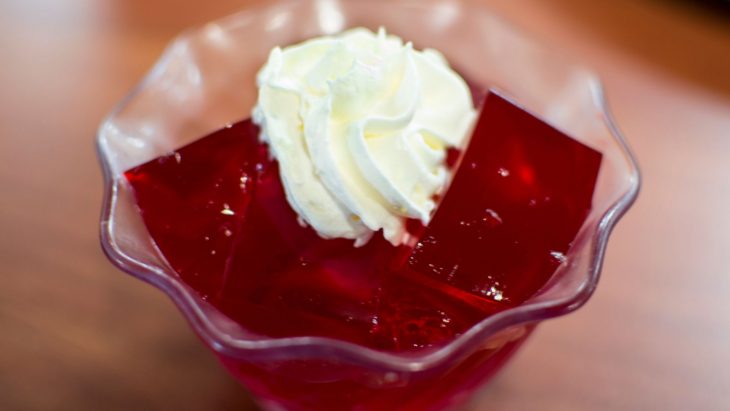
Can Babies Under 1 Have Jelly?
Jello, or “jelly” as it is referred to in the UK, probably shouldn’t be consumed by children under the age of 1 due to several concerns linked to health and choking.
Remember that commercially-sold jello includes artificial dyes and flavorings and is high in sugar. These factors make them unsuitable for children under the age of 1. On top of that, the thickness and consistency of gelatin make it easy to choke on.
Is Jelly OK For 1 Year Old?
If you really want your one-year-old to experience jello, try whipping up a batch of homemade jello that utilizes natural sweeteners and fruit juice to delicately sweeten and color the gelatin. Natural sweeteners that can be used include:
- Honey (not suitable for children under the age of 1 year)
- Maple Syrup
- 100% Juice
- Dates
- Agave Nectar
Is Jello a Choking Hazard?
If you’re still wondering, “Can babies choke on Jello?” the answer is yes. Depending on how you serve the jello, you can expect your little one to have trouble swallowing it. As a result, your baby may choke. This is especially true for babies 6-8 months old that may be new to eating.
Rather than serve jello this way, consider mashing it into very small crumbles to be fed to your baby on a spoon. When you feed your baby jello, don’t let them feed themselves. If you want your baby to learn to eat independently through baby-led weaning, jello isn’t the food to start with. Try using lightly steamed broccoli or zucchini instead.
Is Jello a Choking Hazard For Toddlers?
Yes. Unless your baby is over the age of three, you won’t want to serve the jello in large chunks, which is the way it is typically dished. Doing so may increase the risks of the gelatin getting lodged in your baby’s airways.
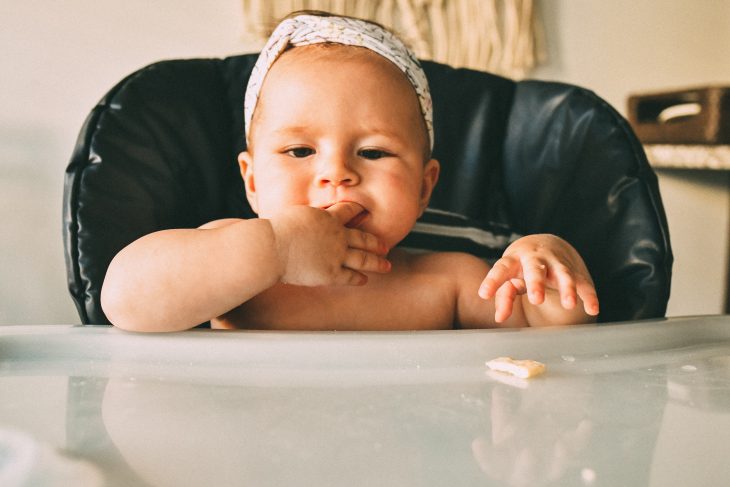
Can Babies Play With Jelly?
Playing with jello or “jelly” is a great sensory opportunity for little ones. The focus shifts from eating to playing and expecting the slippery and jaggery consistency of jello. The jello can also be paired with fun and engaging age-appropriate toys that will take this sensory experience over the edge.
Note: When doing these types of activities with your baby or toddler, be sure to watch them closely and avoid using small objects that could pose choking risks. It’s okay for your baby to eat a bit of the jello, but ensure that you keep an eye on them so that they don’t choke.
Which Jelly Is Best For Babies: Healthy Baby Jello Recipe
- 4 cups of 100% berry or apple juice
- 2 Tbsp unflavored beef gelatin
- 2 Tbsp honey or maple syrup
Instructions
- Add ¾ cups of the apple or berry juice to a bowl and add the gelatin powder.
- Whisk the mixture together until fully incorporated.
- Allow the mixture to “bloom” for about 3-5 minutes. The mixture will look thick and lumpy, which is exactly what you want!
- Pour the remaining juice into a pot. Heat this over medium heat until it is almost at its boiling point.
- Remove the juice from the heat and stir in the honey or maple syrup (you can omit sweetener completely if you want to). Follow up by pouring your gelatin mixture from earlier in the pot as well.
- Pour the finished product into an 8×8 dish or 9×13 baking dish. Which you use will depend on if you want your jello thin or thick. You can also portion the mixture into individual glasses if you choose.
- Refrigerate your jello for several hours, or until firm, usually around the four-hour mark. Thin jello made in a 9×13 dish may be finished in half the time.
Can Babies Eat Jello? Well…
Babies can technically eat jello, however, there are a lot of risks associated with doing so.
We recommend avoiding feeding commercial jello to your baby, and instead waiting until he or she is at least 2 years old. If you don’t want to wait that long (and even if you do) try making homemade jello instead. Experiment with colors and flavors and see what your baby likes most. Just be sure to mash the jello into crumbles small enough for your baby to handle.
Remember that jello is very much a choking hazard up until age 3.
FAQs
No, we do not recommend jello water for babies.
Check out our healthy jello recipe detailed in the blog post above for the details!
Not really. It may feel good on the throat, but your child would benefit more from homemade soup or fruit juice than they would from sugar-laden jello.
Not unless you’ve made it from 100% fruit juice. Otherwise, we’d recommend you treat it as a dessert rather than a daily snack.
No, babies should NOT eat sugar-free jello as the artificial sweeteners in them may upset their stomachs and cause other unsavory effects.
They can, but be careful. You can use gelatin to make your own healthy homemade jello but be sure the final jello pieces are crumbled tiny enough so that your baby doesn’t choke on them.



Leave a Reply